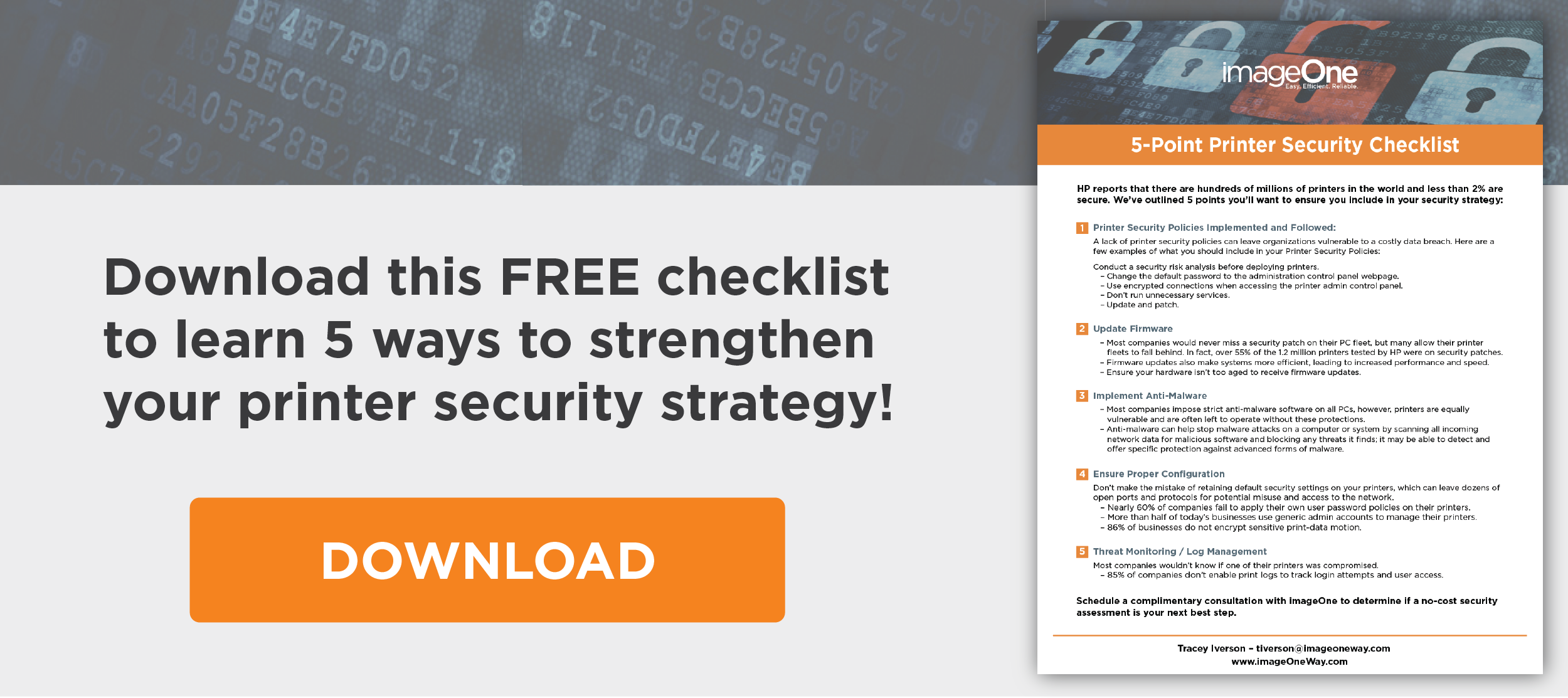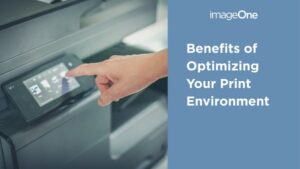Every day, it feels like the world becomes increasingly digital. However, when it comes to the workplace, paper still has a massive presence.
From shipping labels to legal documents to HR records, it’ll be a while—if ever—that we finally say goodbye to paper documents for good. Therefore, it’s still critical that your business maintains a strong security strategy for print documents as well as digital ones.
However, since the production and storage of paper and digital documents differ, so must the proper security policies and processes. In a sense, it’s like you have to create and enforce two different systems.
No matter what industry you’re in, document security must be a top priority. Here are some of those best practices for both hard paper copies and digital documents:
Who Gets Document Access Permission?
Did you know that the majority of security breaches are internal—not external?! That’s right. Though usually caused by human error rather than malice, the most significant threats come from those within the company.
One way to minimize your security risk is by restricting who has access to potentially sensitive documents. Even if your employees are trustworthy and well-trained in document security measures, it only takes one minor slip-up for serious repercussions to occur.
Not everyone in the organization needs to know certain kinds of information. Just imagine the damage that could be caused by leaked employee records, social security numbers, wages, and compensation models.
For digital documents, access can be limited by password protection and proper encryption practices. For paper documents, ensure every sheet is under lock-and-key when not in use and never leave documents out in the open, including in the printer output trays.
Start a Clean Desk Policy
Be sure everyone follows what’s called a clean desk policy. With a clean desk policy, employees ensure that all information—both paper and digital—is cleared and locked away or password protected when they leave their desks. That way, no wandering eyes can steal sensitive information.
Also, never leave your computer on overnight, or even during an extended meeting or lunch break. This also applies to iPads, laptops, phones, and other portable devices. All digital devices should be held to the same standards as any desktop computer as they’re just as vulnerable to a breach.

Shred Those Physical and Digital Files
When a sensitive digital or paper document is no longer needed, shred and destroy it immediately! The same goes for hard drives and even the computer itself.
Shredding paper documents is easy enough with a paper shredder, but how do you destroy hard drives or devices? Though you can buy a machine made to tear apart electronics and any information held inside, many organizations will hire a company to do the work for you. They’ll even provide you a document guaranteeing that your sensitive information is gone for good.
Educate Your Team About Data Security
Honestly, this might be the most important tip of all—print security education.
Understanding and following proper document security protocol shouldn’t only be reserved for the IT team, department heads, leadership, or those in close contact with your company’s most sensitive information. Everyone from the top down should be fully educated about password protections, phishing scams, clean desk policies, document destruction, etc.
Whether you choose to train your staff internally or bring in a third-party organization like KnowBe4 for on-site or online training, there are plenty of ways to ensure your team knows how to keep your company safe.
Create a Company-Wide Security Policy
Does your company have a well-defined document storage and security policy? If the answer is no, set one up ASAP! It’s an easy project that can make a huge difference.
With a thorough document security policy, every team member will know how to protect their information best as well as understand what their expectations are. It’ll also ensure that everyone’s on the same page when it comes to document security.
Though these tips are all great places to begin when devising a document security strategy, remember that it’s just that—a beginning. As every business differs, there’s simply no one way for a company to set itself up for security success.
That’s why we always suggest partnering with an expert managed print service (MPS). An MPS team can come into your organization, analyze your current print security environment, and then offer recommendations about creating a smarter, stronger document strategy.
If you’re ready to make this step, imageOne would love to be the team to do it! Schedule a complimentary Discovery Call and set up a time to talk with one of our managed print specialists. Together, we’ll make your print and digital documents more secure than ever.




